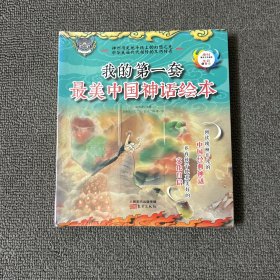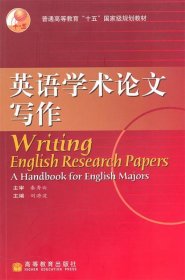
英语学术论文写作与发表(英文版)/“十三五”江苏省高等学校重点教材
¥ 15 4.4折 ¥ 34 九五品
仅1件
江苏无锡
认证卖家担保交易快速发货售后保障
作者陈欣 编
出版社江苏大学出版社
出版时间2018-12
版次1
装帧平装
货号232
上书时间2024-11-30
- 最新上架
商品详情
- 品相描述:九五品
图书标准信息
- 作者 陈欣 编
- 出版社 江苏大学出版社
- 出版时间 2018-12
- 版次 1
- ISBN 9787568407328
- 定价 34.00元
- 装帧 平装
- 开本 16开
- 纸张 胶版纸
- 页数 166页
- 正文语种 英语
- 丛书 “十三五”江苏省高等学校重点教材
- 【内容简介】
- 《英语学术论文写作与发表(英文版)/“十三五”江苏省高等学校重点教材》针对我国研究生学术论文写作与国际发表的迫切需求,系统解析学术论文写作与投稿的核心概念、步骤技巧、方法规范、文体特征、语言技巧、投稿事项等要素,并辅之以详实的案例分析,旨在切实提高研究生学术论文写作与发表的能力。
- 【目录】
-
Chapter 1 Introduction to Academic Research Writing
1.1 The Nature of Academic Research
1.2 Classification of Academic Research
1.2.1 By Research Application
1.2.2 By Research Aim
1.2.3 By Enquiry Mode
1.3 Types of Academic Paper
1.3.1 Research Paper
1.3.2 Academic Report
1.3.3 Review Article
1.3.4 Brief/Rapid Communications Paper
1.3.5 Course Paper
1.3.6 Thesis and Dissertation
1.4 The Style of Academic Writing
1.4.1 Formality
1.4.2 Complexity
1.4.3 Explicitness
1.4.4 Accuracy
1.4.5 Conciseness
1.4.6 Objectivity
1.4.7 Responsibility——Referencing System
1.5 Structure of Academic Research Paper
1.5.1 General Structure——The IMRaD Model
1.5.2 Parts of an Academic Research Paper
1.5.3 Recommended Writing Sequence
Thesis Writing Strategy: Structuring an Effective Research Proposal
Reflections and Practice
Chapter 2 Prewrifing Skills
2.1 Information Collecting
2.2 Academic Reading
2.2.1 Types of Academic Reading Materials
2.2.2 Strategy of Academic Reading
2.3 Note Taking
2.3.1 Types of Notes
2.3.2 Methods of Taking Notes
2.4 Constructing Annotated Bibliography
2.4.1 Definition of Annotated Bibliography
2.4.2 Steps of Constructing an Annotated Bibliography
SCI Paper Writing Strategy: Choosing a Topic
Reflections and Practice
Chapter 3 Results, Discussion and Conclusions
3.1 Results
3.1.1 Using Subheadings to Streamline Reports
3.1.2 Captioning and Referencing Figures and Tables
3.1.3 Typical Sentence Patterns to Describe Results
3.2 Discussion
3.2.1 Purpose of Discussion
3.2.2 Main Elements of Discussion
3.2.3 Writing Requirements for Discussion
3.2.4 Typical Sentence Patterns to Describe Discussion
3.2.5 Case Study of Discussion Section
3.3 Conclusions
3.3.1 Conclusions Based on Sound Evidence
3.3.2 A Reference to the Main Purpose or Hypothesis of the Study
3.3.3 A Brief Summary of the Main Ideas in the Paper
3.3.4 Comments on the Main Ideas in the Paper
3.3.5 Predictions for Future Developments of the Topic
3.3.6 Limitations of the Work Covered By Your Paper
3.3.7 Mention of Further Research
SCI Paper Writing Strategy: Data Presentation
Reflections and Practice
Chapter 4 Methodology
4.1 Qualitative Methods
4.2 Quantitative Methods
4.2.1 Questionnaire Design
4.2.2 Experimental Design
4.3 Sentence Constructions in Describing Methodology
SCI Paper Writing Strategy: Using Verb Tenses to Describe Materials and Data
Reflections and Practice
Chapter 5 Inltoduction
5.1 Structural Elements of Introductions
5.2 Structural Features of Introductions
5.3 Typical Phrases Used in Introductions
5.4 Taxonomy of Literature Review
5.4.1 Independent Literature Review
5.4.2 Dependent Literature Review
5.5 Writing a Literature Review
SCI Paper Writing Strategy: Tenses in the Introduction
Reflections and Practice
Chapter 6 Textual Development at the Syntactical Level
6.1 Sentence Constructions of Professional Papers
6.1.1 Indicative Sentences
6.1.2 Imperative Sentences
6.1.3 Complex Sentences
6.1.4 "It + be + adj. /participle + that clause... ".
6.1.5 Short Form Sentences Led by "As"
6.1.6 Tenses
6.1.7 Passive Voice and Active Voice
6.1.8 Subjunctive Mood
6.2 Conciseness Achieved at the Syntactical Level
6.2.1 Simplifying Expression
6.2.2 Using Ellipsis and Substitution
6.2.3 Deleting Redundancy
6.3 Effectiveness Achieved at the Syntactical Level
6.3.1 Using Concrete and Specific Language
6.3.2 Using Parallel Structures
6.3.3 Using Short Sentences
SCI Paper Writing Strategy: Errors at Sentential Level
Reflections and Practice
Chapter 7 Abstract
7.1 General Structure of Abstracts
7.1.1 Information Elements of Abstracts
7.1.2 Coherence in Abstract Writing
7.2 Types of Abstract
7.2.1 Descriptive Abstract
7.2.2 Informational Abstract
7.2.3 Informational-descriptive Abstract
7.2.4 Structured Abstract
7.2.5 Graphical Abstract
7.3 Linguistic Features of Abstract
7.4 Abstract Writing
7.4.1 A Brief Description of Abstract Writing Process
7.4.2 Optimization of a Draft Abstract
SCI Writing Strategy: A Case Study of Abstract
Reflections and Practice
Chapter 8 Trlle, Author/Affiliotion, Key Words and Acknowledgements
8.1 Title
8.1.1 General Functions of the Title
8.1.2 Linguistic Features of the Title
8.1.3 Writing Requirements for the Title
8.2 Author and Affiliation
8.2.1 General Functions of the Author/Affiliation
8.2.2 Linguistic Features of the Author/Affiliation
8.2.3 Writing Requirements for the Author/Affiliation
8.3 Keywords
8.3.1 General Functions of the Keywords
8.3.2 Linguistic Features of the Keywords
8.3.3 Writing Requirements for Keywords
8.4 Acknowledgements
8.4.1 General Functions of Acknowledgements
8.4.2 Linguistic Features of Acknowledgements
8.4.3 Writing Requirements for Acknowledgements
8.4.4 Samples for Acknowledgements
SCI Paper Writing Strategy: Title, Author, Keywords and acknowledgements
Reflections and Practice
Chapter 9 International Journal Paper Publication
9.1 Why to Choose Appropriate Journals
9.1.1 Benefits of Choosing Appropriate Journals
9.1.2 Bad Results of Poor Choice of Journals
9.2 How to Choose Appropriate Journals
9.2.1 Topic and Scope Match
9.2.2 Appropriate Readership
9.2.3 Impact Factor
9.2.4 Major Citation Index
9.2.5 Distribution and Access to the Journal
9.2.6 Publication Cycle
9.3 Journal Submission Strategy
9.3.1 Analyzing the Selected Article
9.3.2 Reading the Target Journal's Instruction for Authors
9.3.3 Other Suggestions about Paper Submission
9.4 Peer Review and Evaluation Rules
9.4.1 Definition of Peer Review and Its Functions
9.4.2 Types of Peer Review
9.4.3 Understanding the Process of Peer Review
9.5 Common Reasons for Rejecting Manuscripts and Treatment of Rejected Manuscripts
9.5.1 Common Reasons for Rejecting Manuscripts
9.5.2 Treatment of Rejected Manuscripts
9.6 Revision of Manuscripts
9.7 Correspondence between Authors and Editors
9.7.1 Cover Letter
9.7.2 Query Letter
9.7.3 Response Letter (Rebuttal Letter)
9.7.4 Withdrawal Letter
9.7.5 Defense Letter
9.7.6 Request Letter
SCI Paper Writing Strategy: Advice to Contributors
Reflections and Practice
References
点击展开
点击收起
相关推荐
— 没有更多了 —






























以下为对购买帮助不大的评价